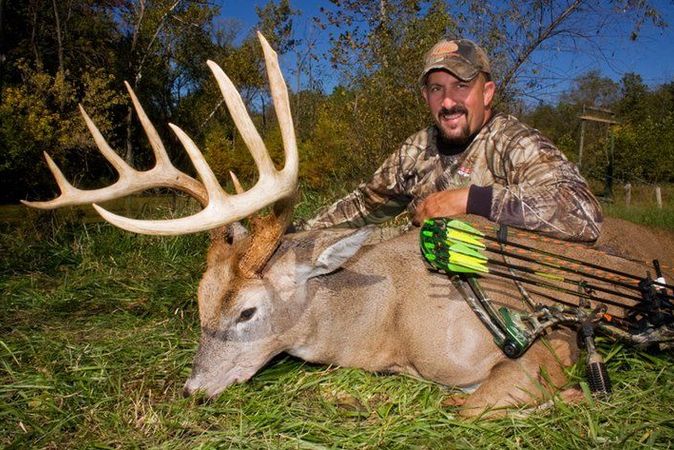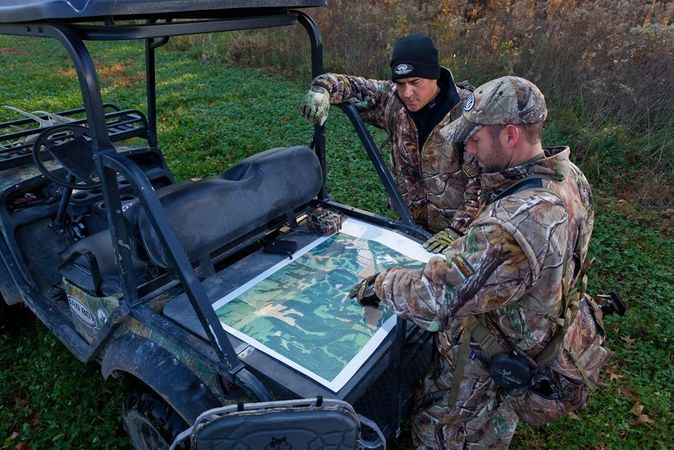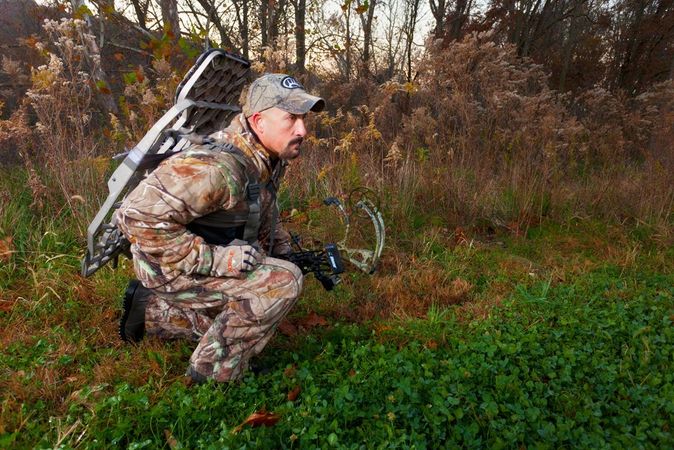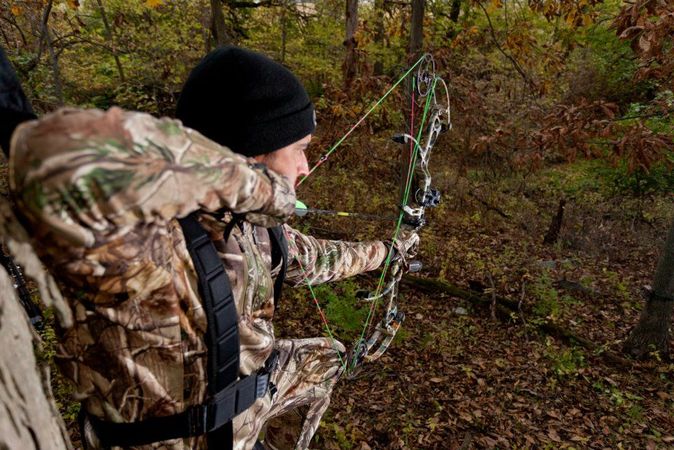You Haven’t Scouted and Have No Idea What Stand to Hunt
Scouting and hanging stands are two elements of deer hunting that pretty much go hand in hand. You hang stands where you find sign, right? Let us, for now, pretend that we have neglected scouting altogether. The first plan that comes to mind would be to hunt a spot that has produced results in recent years. This isn’t necessarily a bad thing because you’re still in the woods though your chances might decrease slightly for opening morning. No matter. If you’ve hunted the property for some time and have a good idea of the areas deer frequent in the morning and afternoons for food, go there.
Whether you take down your deer stands with the closing of each season or leave them up, it’s not uncommon for deer to change their patterns from year to year. Obviously, pressure is a major factor in their choice of travel, feeding and bedding areas. However, as most of us know, deer will often begin doing things differently for no apparent reason.
If you’re winging it on opening day, use the morning hours to quickly and quietly scout prospective hotspots - most likely food sources - for the afternoon and following morning.
Scouting while hunting is an effective technique. Perhaps you’re able to witness some heavily traveled trails from the stand and only need to move 30 yards closer. Just use caution in scouting during the hunt so that you don’t push deer by scouring their bedding areas. You might ruin a stand for the foreseeable future by doing so. Should you find a lot of sign in a concentrated area, back out quickly and hang your stand on the perimeter of the area. Must you infiltrate deeper, in this case perhaps a buck has accumulated a large number of rubs in a one- to two-acre sector of the property, we’d suggest hanging your stand and waiting several days before going back in to hunt it.
If you’re not familiar with the parcel, maps are useful tools for finding the travel corridors and possible feeding spots where there are large clusters of oaks, persimmons and other fruit-bearing trees. Google Earth (or Google Maps using the “Earth” setting) is the cheapest and most accessible tool for this. Groups of large trees are easily discernable as well as clearings, ridges and bodies of water that you may have to cross. These same bodies of water - small ponds and creeks - may draw deer, and are always a good place to watch during the early season. It’s a lot easier to find tracks in the soft mud around ponds and deer will create a funnel where they cross creeks.
For anyone who hasn’t heard about HUNTERRA, they are providing a pretty important component for hunters, landowners and land specialists. Gone are the days of having to use both aerial and topographical maps to understand land cover and elevation change. HUNTERRA has created a hybrid of the two that adds topo contours to an aerial view. They produce perhaps the best custom maps on the market today. Plus, there are always times when, as hunters, we enter areas where cell phones don’t get service. Don’t you just love when that happens? We certainly do.
Asking a hunting buddy or someone you know that frequents the area is another possible way to decide on your opening morning stand location - developing a local informant, if you will. Farmers are the best sources of information for local gossip and deer patterns.
The best remedy for any of this is obvious - scout during the summer and have your stands hung weeks before opening day so that your scent has time to dissipate. We’re aware that that’s easier said than done. Most of us lead busy lives and are a part of the weekend warriors who head out Friday evening and must return home some 48 hours later on Sunday night.
You Dropped the Ball on Planting Food Plots

Remember at the end of last season when you were fighting cabin fever and designing your food plots on maps and paper? You had your plot locations marked, a planting schedule and a shopping list of seed. But then spring came around, the turkeys started gobbling and the fish we’re biting and planting was put on the backburner. While you may have missed the spring planting window, you may be able to still grow some food for the season during September. You just have to time it right, factoring in stingy autumn rains and the first frost of the season.
“When you are talking about fall food plots, there’s really three seed varieties to consider,” said Paul Sawyer, executive producer and chief editor of Whitetail Properties TV. “That’s clover, cereal grains and brassicas. Your clovers, although you can plant them in the fall, you really are planting them for next spring. With that in mind, focus on blends that are far more attractive during the fall - your cereal grains, your oats and your winter wheat. If you already have a perennial clover plot growing on your land, you can drill the oats or winter wheat into it, which is going to make that a hybrid that’ll be good until the end of August and carry you through the season.”
When the temperatures drop and it gets really cold, Sawyer is sure to have brassicas, rape, kale and turnips in the ground.
“When those really hard frosts come in, those leaves on the brassicas become very rich in sugar content,” said Sawyer. “They absolutely drive the deer crazy.”
Now that you know what to plant, you need to get the timing right. Depending on the latitude in which you live, it can be a race against the clock. Use this planting guide to determine when to plant. If you live in the mid-South, the window is closing fast, and you may have to break some food plot planting commandments, but be sure to follow the big ones: Remove competing weeds and grasses, apply fertilizer/lime and assure good seed-to-soil contact.
If you live in Northern climates - say above the Illinois/Wisconsin border - you probably missed your window. Whitetail Properties Land Specialist, Justin Mason, thinks it’ll serve you best to look at Plan B:
“In Southern Illinois, acorns have just started dropping,” said Mason. “You can have the most beautiful fall food plot around, but it won’t matter once the acorns hit the ground. Instead of trying to force the issue of food plots, spend your time scouting the timber. From opening day (in Illinois) until about mid-October, this will be your best chance of filling a tag if no other food exists on your property.”
You Don’t Have a “Hit List”

This may be one of those rare instances when your procrastination actually pays dividends. Sawyer actual prefers to wait until bucks shed their velvet before running a trail camera survey.
“The biggest reason I wait is because once they drop their velvet, they have broken out of their bachelor groups,” said Sawyer. “As they disperse, some deer just disappear. I may see them again next summer, but for whatever reason, they move to another property during the hunting season.
“Hunters checking cams all summer will grow an emotional attachment to a big deer, but they are usually disappointed when they never see them during the season.”
But a trail camera survey will not only help you create a hit list. It will estimate deer density, doe-to-buck ratio, buck age structure, fawn recruitment and more. A 10- or 14-day survey will yield valuable information to help guide you in achieving management success where you hunt.
Follow this guide from QDMA to run a trail cam survey right now. It’s great information to have when deer start parading past your stand. You will know how many does you need to take, and which bucks to let walk.
You Haven’t Shot Your Bow Since Last Season

You ever notice that the archery shops are slammed pack this time of year but not in June or July? Make a resolution to start shooting your bow throughout the summer next year. For this season, take a week before you step into the woods and fit in as much practice as you can.
Day 1: Visit the archery shop with a shooting range and have a technician look over your bow. Check for proper draw length, cam timing and centershot alignment. Once your equipment passes inspection, hit the range and sight in with field points. Do this at the archery shop, because if you struggle to get your arrows to group tight, you can ask the experts for help.
Day 2: Sight in with broadheads.
Day 3 - 6: Shoot two arrows a day. Keep your bow in the garage and place a target in your yard or driveway. Before leaving and after getting home from work each day, shoot one arrow. Set the alarm on your phone for 30 seconds and walk in a large circle or just wander around with no particular rhyme or reason. Once the alarm goes off, find the target. Can you make the shot? The only way to find out is to try. This simulates a real hunting situation. One where you will need to guess yardages, compensate for angles, obstructions and even weather conditions. Sometimes it’s okay to say, “No, this is not a shot I would take,” and walk around again to reposition yourself. Once you decide it’s an ethical shot, shoot as though you were shooting the buck of your dreams.
Day 7: Hold a Dress Rehearsal. Take your target, dress in your hunting clothes - facemask, gloves, everything - and climb a tree stand. Pick a stand that will not have much deer activity around it and is far from bedding areas. Be sure to go in at a non-peak time. Or, you can always hang a tree stand in your yard.
When shooting at the target, focus on your form. In hunting situations, some bowhunters have the tendency to throw the fundamentals out the window. We need to maintain the same upper-body shooting form in the tree stand as we do at the range. This means we have to bend at the waist instead of dropping our bow arm to compensate for the downward angle. Once you are hitting the target with consistency, move it to another distance and angle.
It was Abraham Lincoln who said, “Things may come to those who wait, but only the things left by those who hustle.” Well, deer season is here for some and on the horizon for others, so it’s time to hustle.







